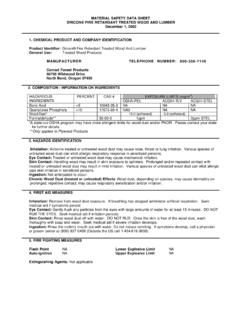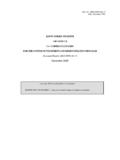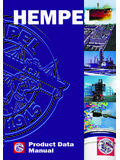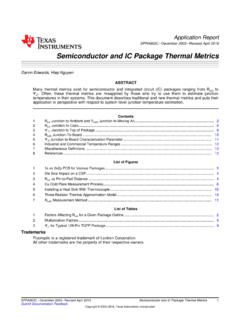Transcription of BY ORDER OF THE AIR FORCE INSTRUCTION 11-403 …
1 NOTICE :This publication is available digitally on the AFDPO WWW site at: WITH THIS PUBLICATION IS MANDATORYBY ORDER OF THESECRETARY OF THE AIR FORCEAIR FORCE INSTRUCTION 11-40320 FEBRUARY 2001 AIR EDUCATION AND TRAINING COMMANDS upplement 15 december 2003 Flying OperationsAEROSPACE PHYSIOLOGICAL TRAININGPROGRAMOPR: AFMOA/SGOA (Colonel Al Hartzell) Certified by: AF/SGO(Maj General Earl W. Mabry)Supersedes AFI 11-403 , 1 July : 76 Distribution: FThis INSTRUCTION implements AFPD 11-4, Aviation Service. It governs the Air FORCE Aerospace Physiolog-ical Training Program. The program teaches the physiological stresses and human factor implications ofmodern military aviation and prepares the flyer to meet these challenges. The goal of this program is toenhance flight safety by helping to reduce the number of human factor mishaps. It applies to active dutyAir FORCE , Air FORCE Reserve, and Air National Guard personnel on flying status, passengers in certaintypes of aircraft, and personnel who manage physiological training and research chamber activities.
2 Itimplements NATO STANAG 3114, Aeromedical Training of Flight Personnel; and NATO STANAG3474, Temporary Flying Restrictions Due to Exogenous Factors Affecting Aircrew Efficiency, Air Stan-dard 61/101/3, Aviation Medicine/Physiological Training of Aircrew, and Air Standard 61/117/1, AviationMedicine/Physiological Training of Aircrew in Spatial Disorientation. Records Disposition. Maintainand dispose of records created as a result of processes prescribed in this publication in accordance withAFMAN 37-139, Records Disposition Schedule. Send recommendations for changes on AF Form 847,Recommendation for Change Publication, to AFMOA/SGOA, 110 Luke Avenue, Room 405, BollingAFB DC 20332-7050. Attachment 1 is a glossary of references and supporting Privacy Act of 1974 affects this INSTRUCTION . The authority of Title 10 Sections 133 and 8013allows the collection and maintenance of this information. Forms required by this INSTRUCTION and affectedby the Privacy Act have appropriate Privacy Act Statements.
3 Privacy Act System of Records Notice F044AF SG H, Air FORCE Aerospace Physiology Training Programs, applies. The use of a name of any specificmanufacturer, commercial product, commodity, or service in this publication does not imply endorsementby the Air FORCE .(AETC) AFI 11-403 , 20 February 2001, is supplemented as follows: 2 AFI11-403_AETCSUP1_I 5 december 2003 SUMMARY OF REVISIONSThis revision incorporates Interim Change 2001-1 and further defines the role of the Human PerformanceTraining Teams; explains the changes in cadet, High Altitude Parachute (HAP), and refresher aerospacephysiological training expiration dates; outlines authorized training units, clarifies medical qualificationsfor civilian trainees; adds Chapter 12, Curriculum and Training Standards Program. A | indicatesrevised material since the last edition. The entire text of the IC is at the last attachment.(AETC) Aligns specific AETC aerospace physiology training requirements, supporting joint specializedundergraduate flying training (JSUFT) and AETC graduate flying training programs, with the basic the MAJCOM coordinator for AETC's Aerospace Physiology Program (para ) and theMAJCOM functional manager (MFM) for Aerospace Physiology (para ).
4 Adds assigned life sup-port and survival, escape, resistance, and evasion (SERE) instructor job descriptions, qualifications, andresponsibilities (paras 37 and 38). Lists initial issue flight gear and equipment (para ) and definesspecific inspection criteria for swing-landing trainers (SLT) and lateral drift trainers (LDT) (para (Added)). Deletes requirement to use AETC Form 44, Aerospace Physiology Training Critique. A bar(|) in the left margin indicates revised material. (AETC) NOTE: Maintain and dispose of records created as a result of processes prescribed in this publi-cation in accordance with AFMAN 37-139, Records Disposition Schedule. Chapter 1 RESPONSIBILITIES General.. Command (MAJCOM).. Program Responsibility.. Unit Commander.. , Aerospace Physiology Training Flight (APTF): .. , Aerospace Physiology.. Performance Training Teams: ..10 Chapter 2 TRAINING Who Are or Will Be Placed on Active Flying Status: .. in Aircraft Flying Above 18,000 Feet Mean Sea Level.
5 Training: .. Who Must Complete Refresher Training Before Permanent Change of Station (PCS) to an Overseas Location.. requests..15 Chapter 3 QUALIFICATIONS OF PHYSIOLOGICAL TRAINING Sciences Corps, Rated Officers, and Enlisted Personnel..16 AFI11-403_AETCSUP1_I 5 december Support Flights.. (AETC) Operational Support Flights.. Examination and Medical Standards.. (AETC) Medical Examination and Medical Standards.. Instructors.. Not Directly Assigned to a Chamber Facility.. (AETC) Personnel Not Directly Assigned to a Chamber Facility.. Physiology Personnel Training Requirements: .. (Added-AETC) Aircrew Life Support Instructors Assigned to Undergraduate Flying Training Aerospace Physiology Training Flights (APTF): .. (Added-AETC) SERE Instructors Assigned to Undergraduate Flying Training APTFs: 19 Chapter 4 LIMITATIONS ON INSIDE Exposures for Inside Instructors-Observers.. Duty Pay.. Hazardous Duty Pay.. To Issue Orders..20 Chapter 5 METHODS USED IN THE TRAINING Physiological Training Facilities.
6 Lectures.. Classes.. Aerospace Physiology Training Technicians.. Products .. Chamber Flights.. Tests.. (AETC) Written Tests..23 Chapter 6 TRAINING Training.. (AETC) Original Training.. Altitude Parachutist (HAP) Initial Training.. Cadet Initial Training.. Training: ..264 AFI11-403_AETCSUP1_I 5 december Training: ..26 Chapter 7 CHAMBER of Flights.. Restrictions.. Flight Exposures After Diving.. Requirements.. (AETC) Scheduling Requirements.. Completion Requirements.. of Ascent and Descent.. Number of Students Authorized on Chamber Flights.. Observer Requirements.. Reactor Plan.. Chamber Flight Objectives and Demonstrations..30 Chapter 8 PRESSURE SUIT Suit Training Requirements.. Pressure Suit Training.. Pressure Suit Training.. Training..32 Chapter 9 CENTRIFUGE TRAINING AND .. Composition and Qualifications: .. Monitoring.. for Other Personnel: .. LOC Prevention..34 Chapter 10 EQUIPMENT Equipment.. or Transfer of Training Devices.
7 (AETC) Issue or Transfer of Training Devices.. Control Board.. (Added-AETC) Equipment Responsibilities of Logistics Group Commanders..35 AFI11-403_AETCSUP1_I 5 december (Added-AETC) Equipment Responsibilities of the Base Civil Engineer..36 Chapter 11 MAINTAINING PHYSIOLOGICAL TRAINING RECORDS, FORMS Physiology Monthly Report .. (AETC) Aerospace Physiology Monthly Report (RCS: HAF-SG(M)7137).. Form 361, .. (AETC) AF Form 351, Chamber Reactor/Treatment Report .. Form 699, Physiological Training Record.. (AETC) AF Form 699, Physiological Training Record.. Form 702, .. Form 712, .. Form 1274, .. Form 3150-1, .. of Forms.. Numbers.. Prescribed.. (Added-AETC) Aerospace Physiology Training Critique..39 Chapter 12 CURRICULUM AND TRAINING STANDARDS .. : .. of Evaluations: .. of Directed Curriculum and Training Standards Program Evaluations.. Criteria for Directed Curriculum and Training Standards Program Evaluations.. for Directed Curriculum and Training Standards Program Evaluations.
8 Of Directed Standardization Program Evaluations..44 Attachment 1 GLOSSARY OF REFERENCES AND SUPPORTING INFORMATION 45 Attachment 2 TYPE 1 HYPOBARIC CHAMBER FLIGHT (RAPID DECOMPRESSION) 48 Attachment 3 TYPE 2 HYPOBARIC CHAMBER FLIGHT 50 Attachment 4 TYPE 3 HYPOBARIC CHAMBER FLIGHT 526 AFI11-403_AETCSUP1_I 5 december 2003 Attachment 5 TYPE 4 HYPOBARIC CHAMBER FLIGHT 54 Attachment 6 TYPE 5 HYPOBARIC CHAMBER FLIGHT 57 Attachment 7 AEROSPACE PHYSIOLOGY PROGRAM EQUIPMENT AND SUPPLY LISTING 60 Attachment 8 IC 2001-1 TO AFI 11-403 , AEROSPACE PHYSIOLOGICAL TRAINING PROGRAM 69 AFI11-403_AETCSUP1_I 5 december 20037 Chapter 1 RESPONSIBILITIES Surgeon General.
9 HQ USAF/SG provides medical, technical, fiscal, and administrative supervisionneeded to carry out the Aerospace Physiological Training The Objectives of the USAF Aerospace Physiology Program To develop and conduct physiological and human factors training that meets the needs ofUSAF crewmembers, non-aircrew warfighters, and support To support Team Aerospace in developing and delivering physiological/human factorsthreat briefings specific to the deployed To develop the human factors expertise to support aircraft mishap To develop and field Human Performance Training Teams (HPTT) to provide humanfactor and performance support for the warfighting community. To assist Team Aerospace in the safe and effective deployment and employment of To support special needs of the aircrews and their The USAF Surgeon General approves the appointment of a senior NCO to perform additionalduties as the Air FORCE Career Field Manager (AFCFM) for the 4M0X1 Air FORCE Specialty.
10 TheAFCFM acts as the communication link between the Air FORCE Surgeon General s office and theenlisted personnel in the Aerospace Physiology career field. The Develops and maintains the currency of the Career Field Education and Training Plan(CFETP). Assists the technical training manager and course personnel with planning, developing,implementing, and maintaining all AFSC-specific training Acts as final waiver authority for enlisted training/classification Assists the Air FORCE Occupational Measurement Squadron (AFOMS) in identifying sub-ject matter experts (SMEs) for Specialty Knowledge Test (SKT) revision projects and acts as con-sultant on promotion test content and question validation Assists AFOMS in developing and administering Job Inventory Surveys and interpretingOccupational Survey Reports (OSR) Develops, coordinates, and implements career field classification/structure Major Command (MAJCOM). MAJCOM headquarters should support the regulatory, technical,and resource needs of the following (note that programs within line organizations may be funded throughline channels): USAF Aerospace Physiology Programs, MAJCOM Aerospace Physiology Program,MAJCOM Human Performance Training Team Program, MAJCOM Aerospace Physiology Personnel,MAJCOM Aerospace Physiology Facilities and Equipment, MAJCOM High Altitude Airdrop MissionSupport Program, MAJCOM Centrifuge and Pressure Suit Operations.
















